AWS Certified AI Practitioner
Guidelines for Responsible AI
Responsible Model Selection Practices
Welcome back, students. In this article, we delve into responsible model selection practices—a critical step in AI development. The chosen model significantly impacts system performance, user experience, market strategy, and overall business profitability.
Selecting the right model from the start is imperative. A model that is too large may incur high resource costs and slow response times, whereas one that is not well-aligned with your application goals may lead to excessive expenses, subpar performance, and a poorer user experience. The diagram below shows how model selection influences performance, profitability, user experience, and market strategy:
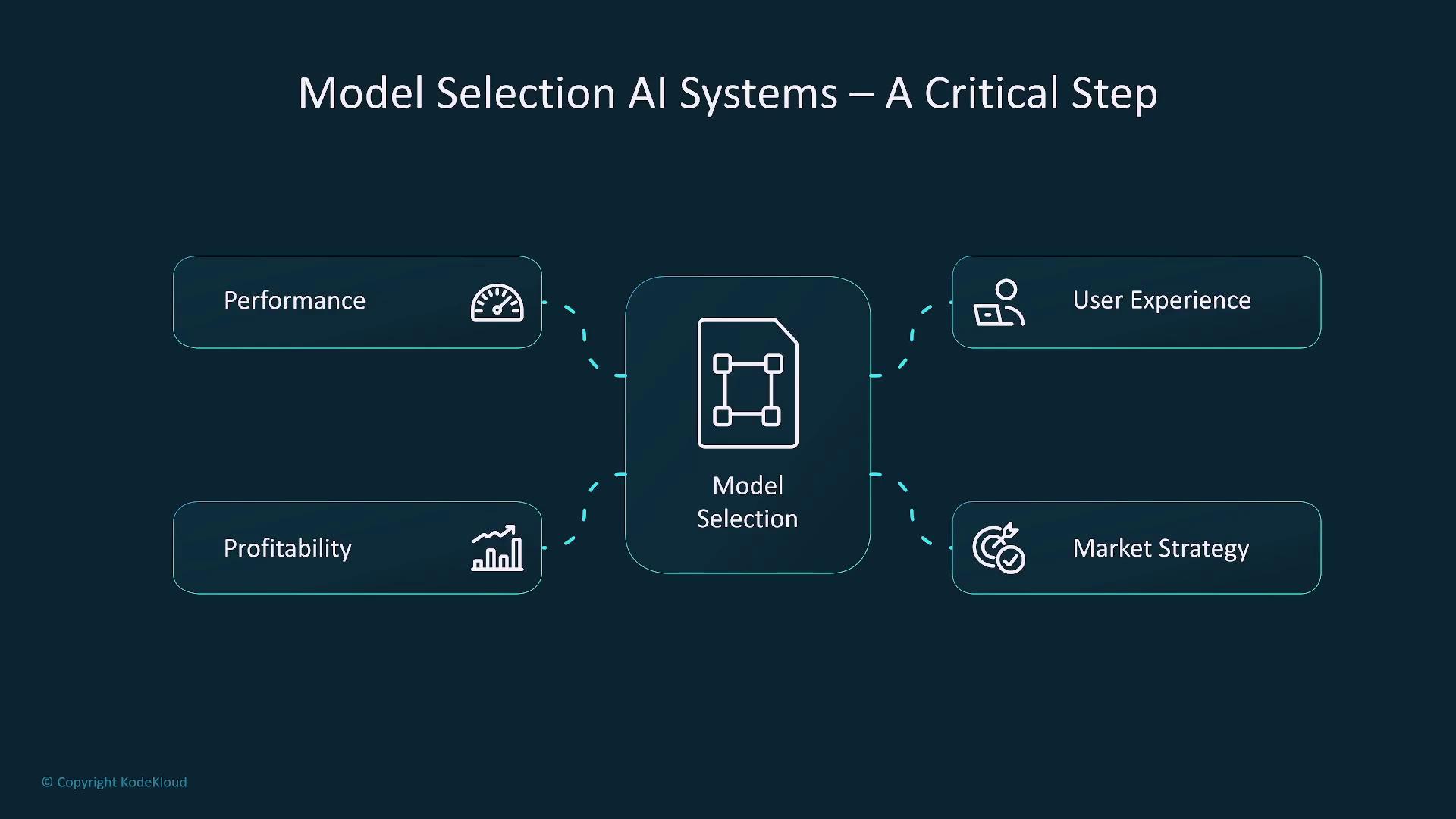
For instance, employing a commercial model in an open source–centric company can lead to spiraling costs due to third-party licensing fees. Similarly, a model that hasn't been sufficiently trained for its intended domain will fall short on performance. On the other hand, a well-tuned model can boost customer satisfaction, drive sales, and improve accuracy. The image below compares a well-tuned model against a poorly tuned one, highlighting their influence on customer satisfaction and sales accuracy:
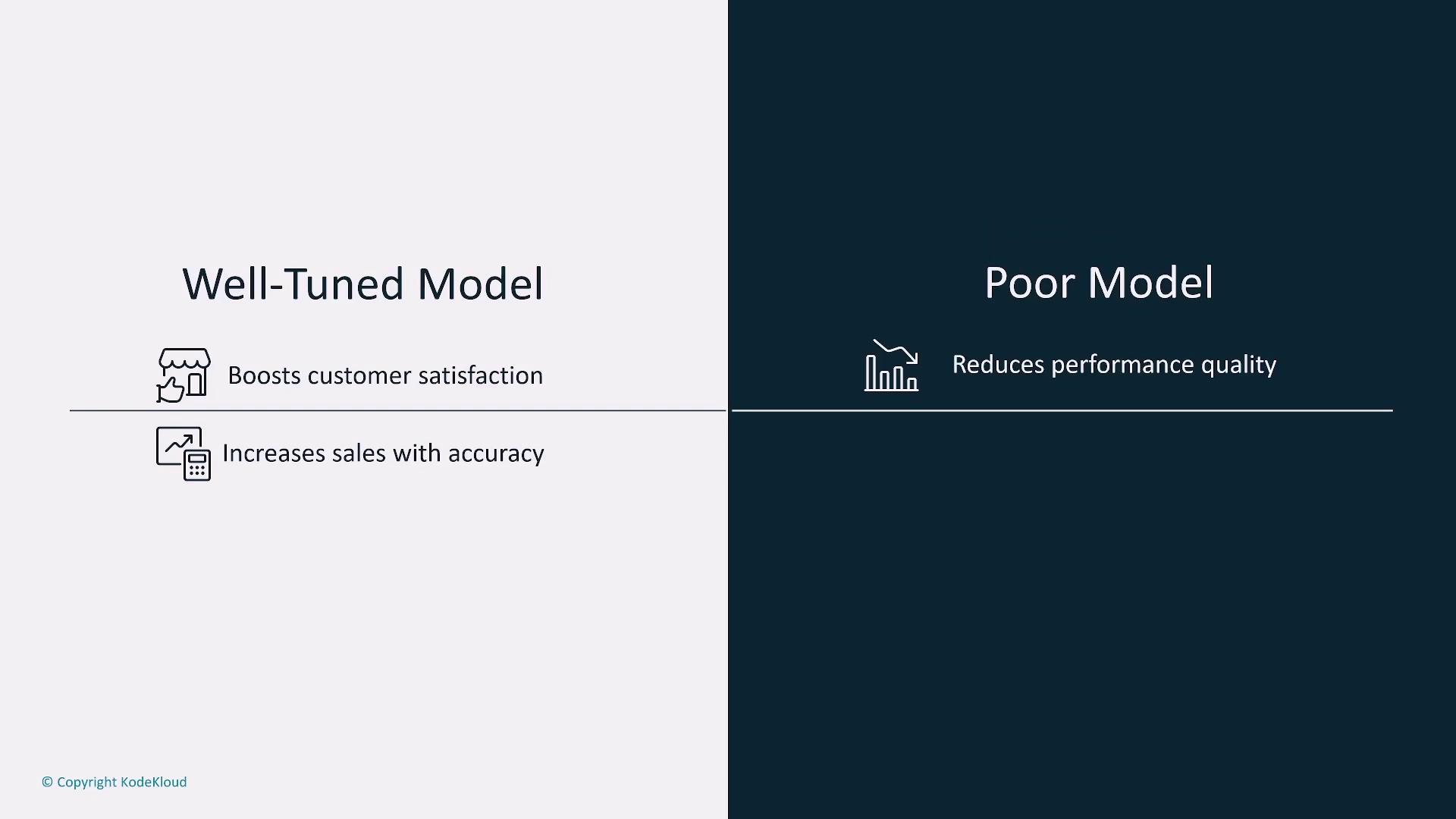
Narrowing Down the Application Use Case
It is crucial to precisely define your application use case by considering not only the technological aspect but also the underlying business objectives, target audience, and domain requirements. For example, facial recognition should not be viewed merely as a technical solution; it must serve a definitive purpose—such as aiding in gallery retrieval for finding missing persons or enabling virtual proctoring during examinations. Each scenario has different requirements for precision and recall. The diagram below emphasizes how a focused use case optimizes model performance:

For instance, in a gallery retrieval system for missing persons, high recall is prioritized to retrieve as many potential matches as possible—even at the expense of accepting some false positives. In contrast, a celebrity recognition system requires high precision, ensuring that the identified matches are reliably correct. The following diagram compares these two systems and their distinct performance objectives:

Retail AI Use Cases
In retail AI applications, the use case may differ significantly:
- Cataloging Products: Requires a neutral model that delivers clear, accurate product listings for a broad audience.
- Personalized Engagement: Demands a model tailored for persuasive content and high engagement when targeting a specific demographic.
The diagram below illustrates these differing focuses in a generative AI retail use case:
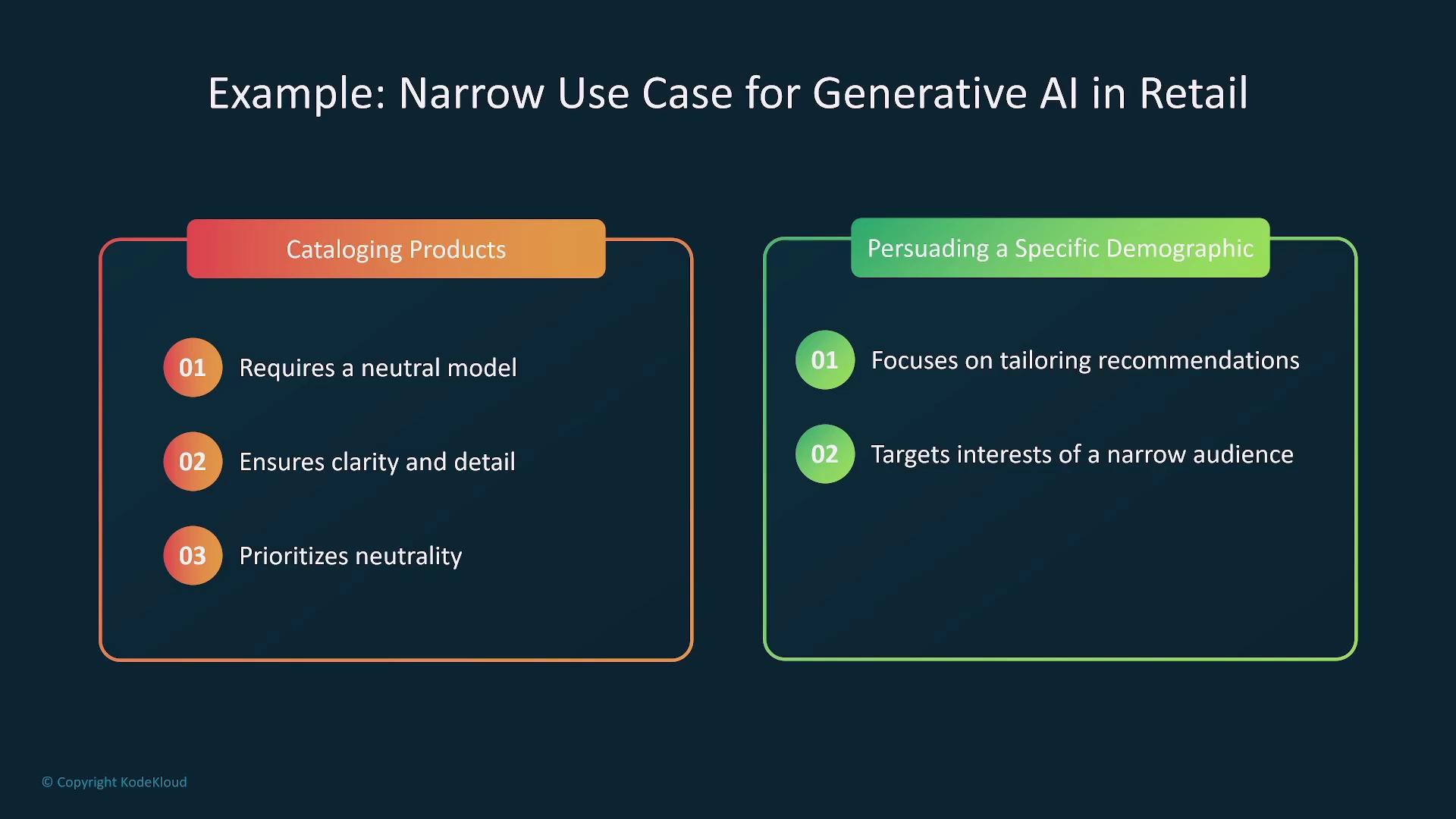
Performance Considerations
Choosing a model that not only offers an excellent user experience but is also highly customizable, agile, and compliant with licensing restrictions is paramount. A model’s performance may vary significantly from one dataset to another, which requires ongoing evaluation and tuning as your data evolves. The bar chart below compares the performance of a model across three different datasets:
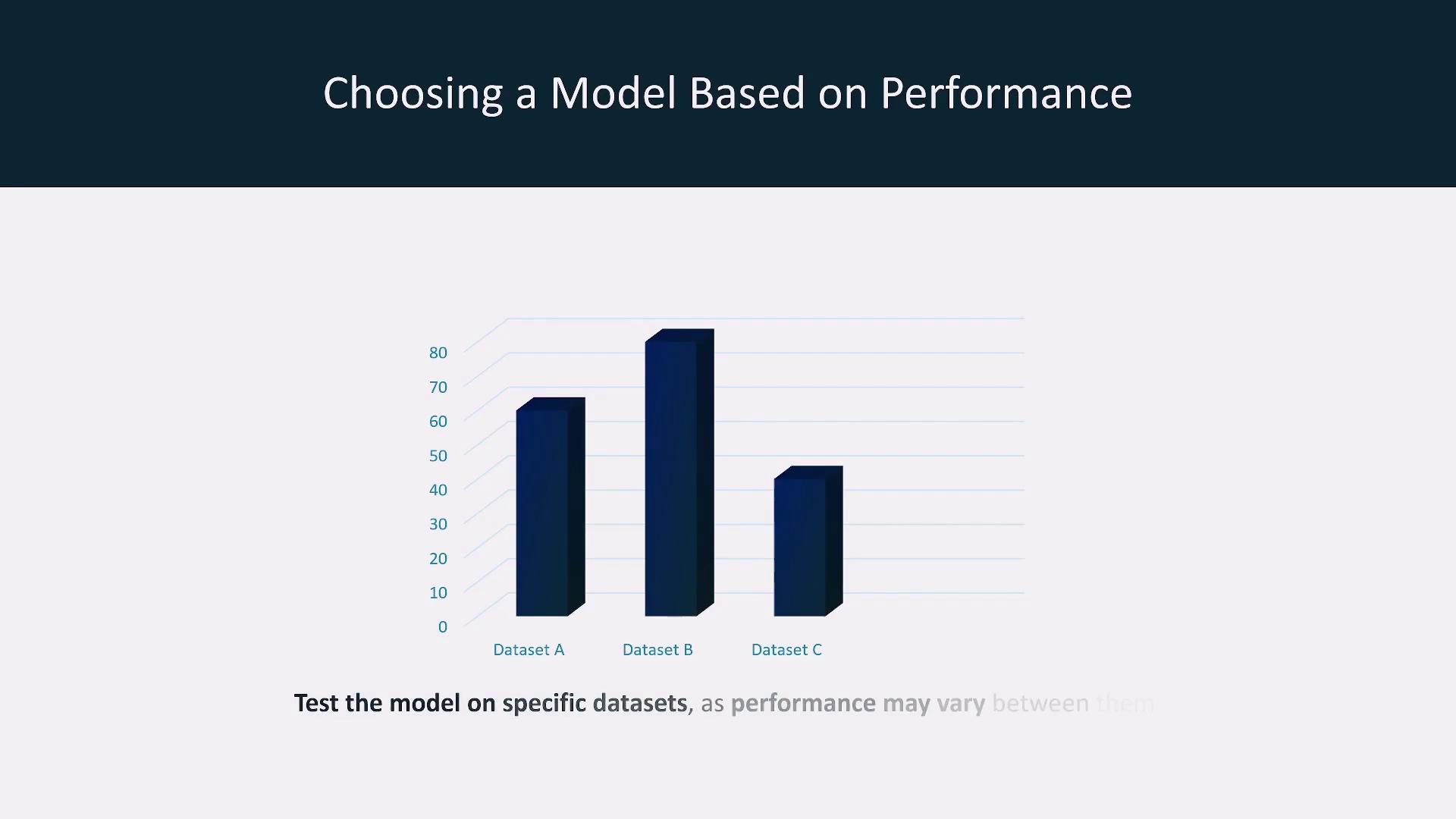
Keep in mind that model performance is a function of both its architecture and the dataset on which it is tested. A model might excel with one dataset while struggling with another. Continuous evaluation and adaptation are essential. The graph below underscores the importance of ongoing performance tuning as both datasets and model versions evolve:
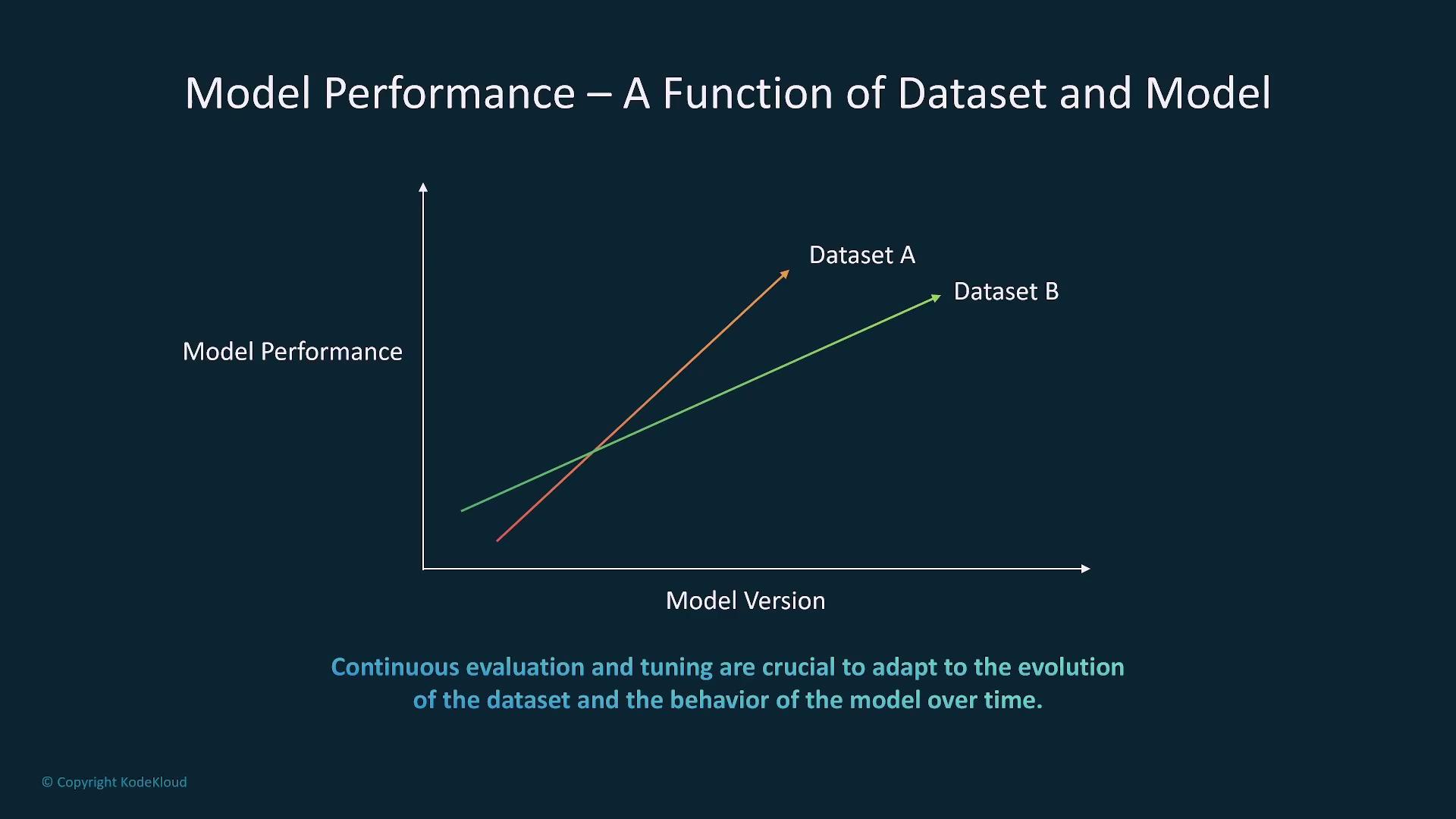
Environmental and Ethical Considerations
Responsible model selection also encompasses environmental factors. Considerations such as energy consumption, resource utilization, and environmental impact are becoming increasingly important. While large models can deliver high accuracy, they often require significant energy, whereas smaller, more efficient models might serve your purpose just as well. The following diagram outlines strategies to address resource utilization:
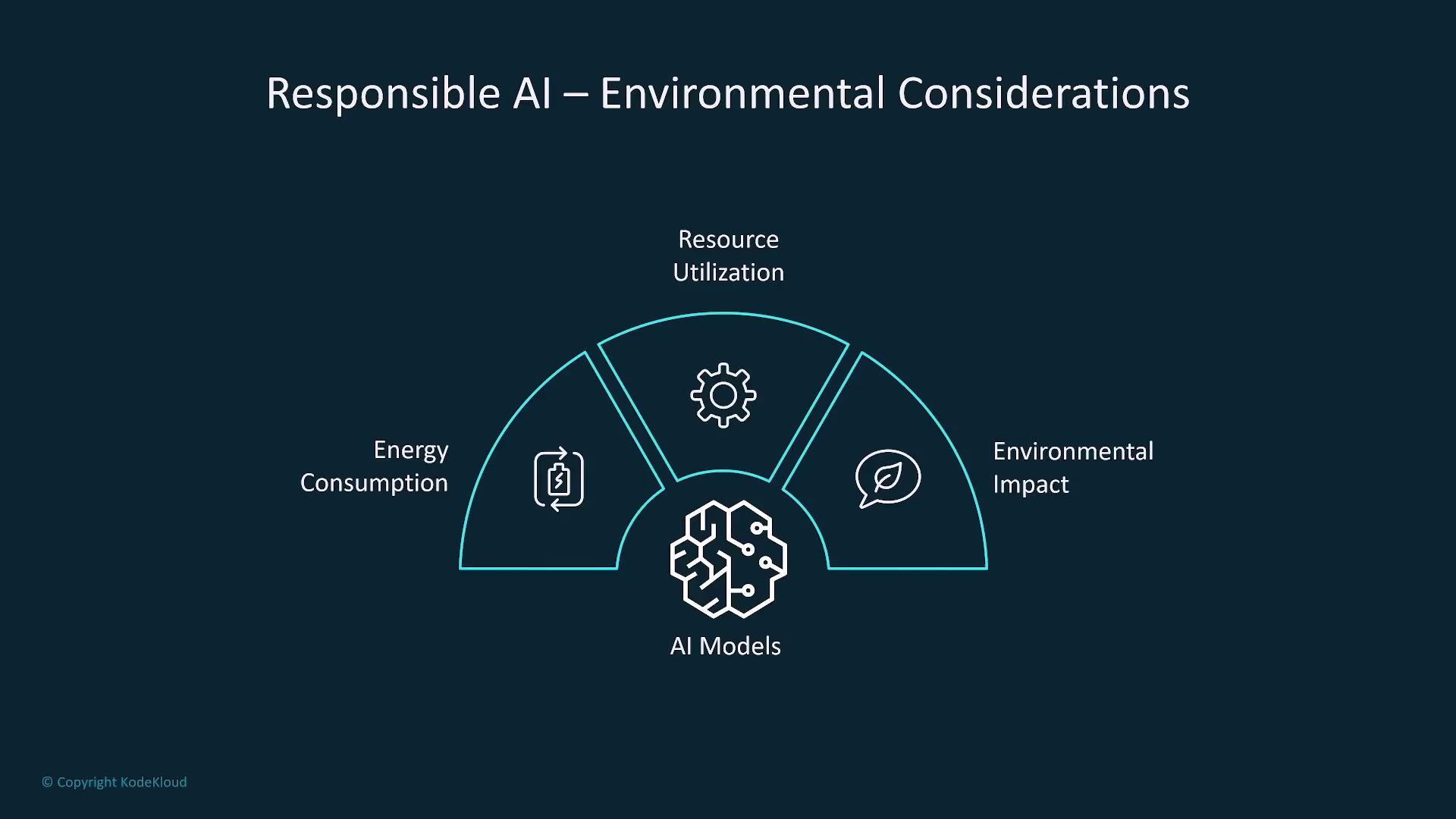
Instead of focusing solely on performance, you might choose energy-efficient models or implement strategies such as optimizing for renewable energy usage and reducing carbon footprints. Consider hardware costs and sustainability—for example, reusing or sharing hardware components can significantly reduce electronic waste. As part of the well-architected framework, sustainability is a core component, as illustrated below:
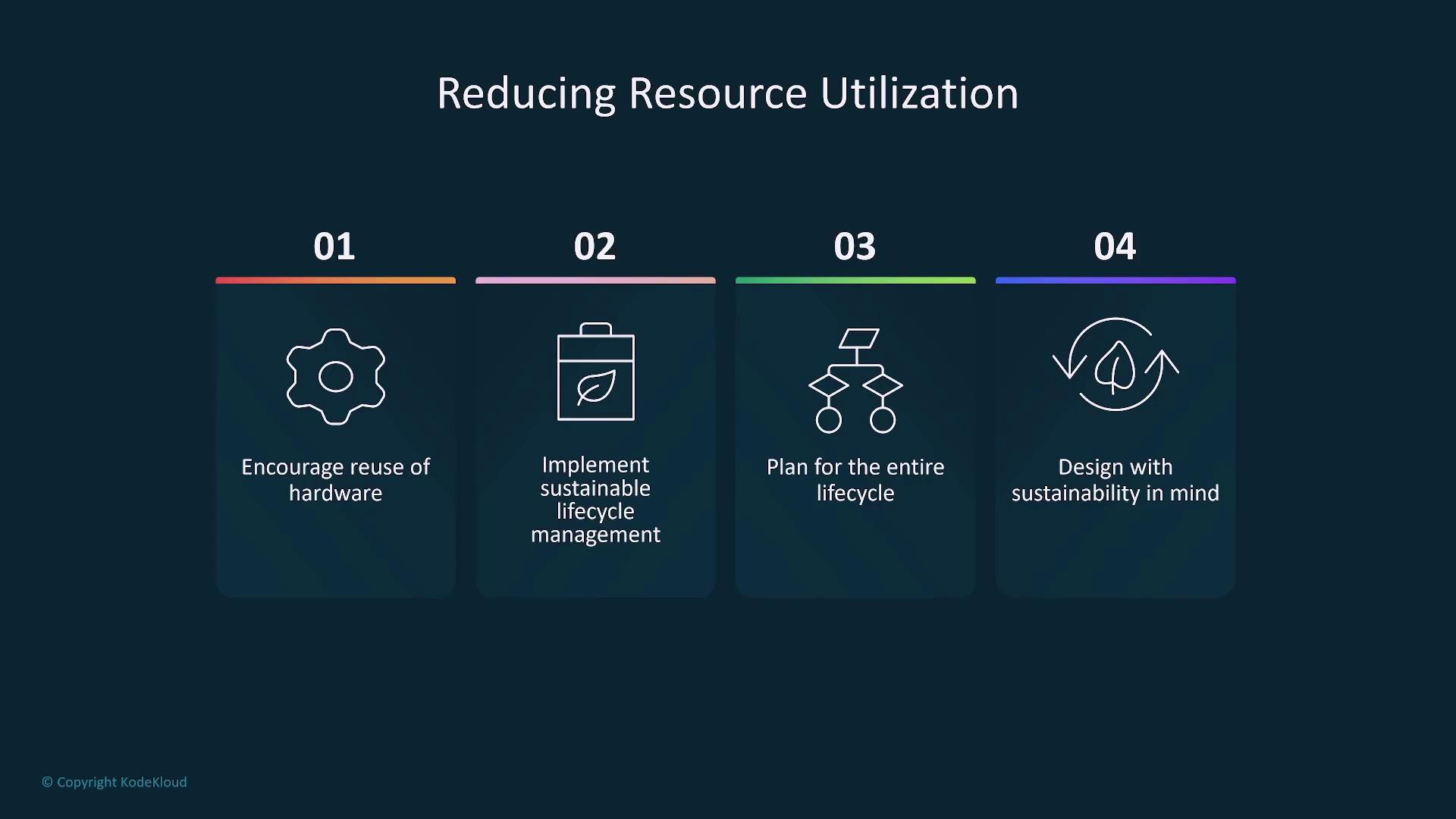
Responsible AI Practices
When making model selection decisions, assess both the direct and indirect impacts. Weigh benefits against risks including worker displacement, data monopolization, and ethical considerations.
Moral agency in AI refers to the ability of a model to align its decisions with ethical values. Although current AI systems do not yet possess human-level moral reasoning, establishing transparency, traceability, and accountability in your models is essential. This approach allows you to understand how inputs influence outputs and to hold the system accountable. The image below highlights these key responsible AI principles:
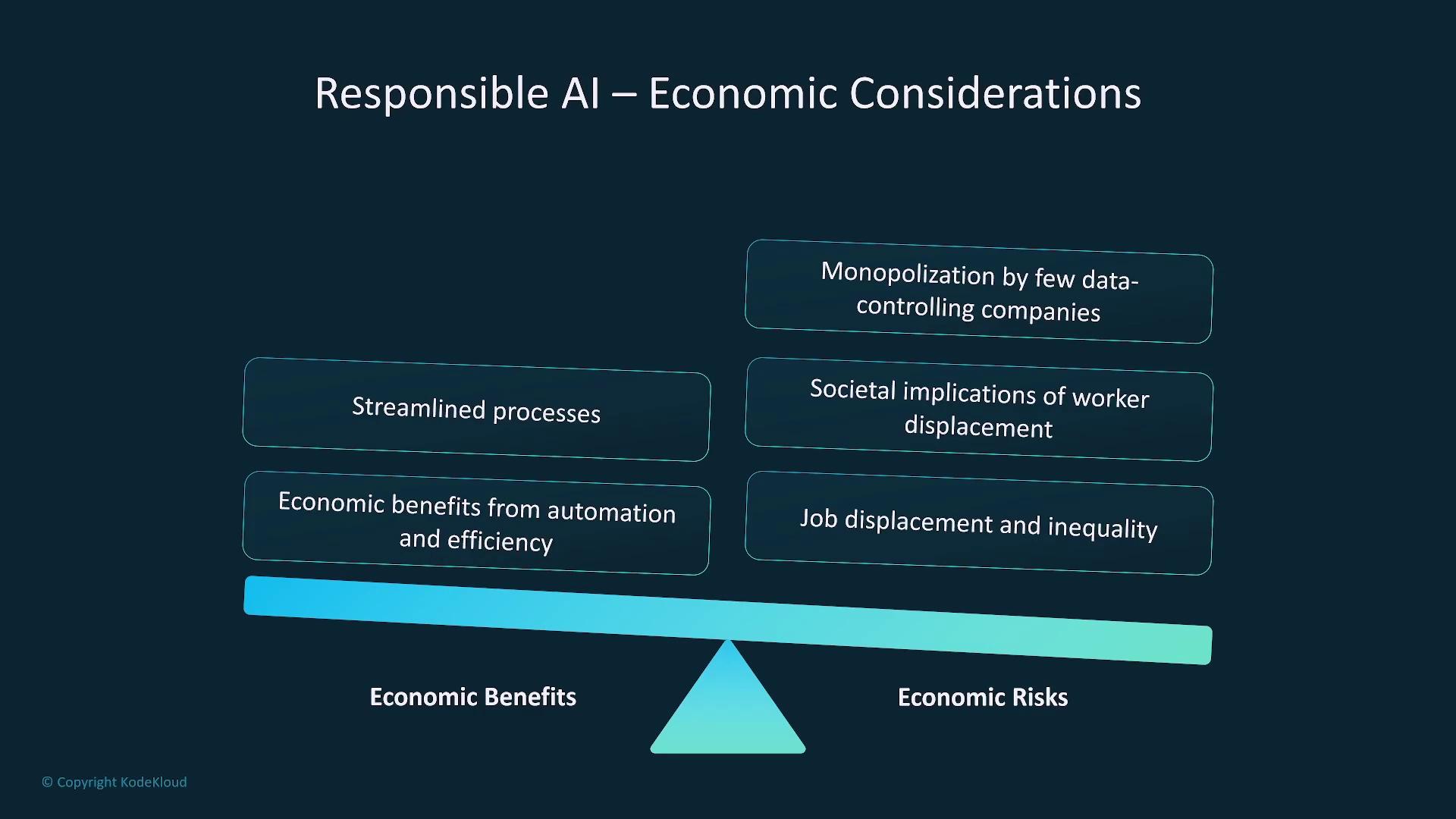
The following diagram further outlines core principles such as moral agency, value alignment, transparency, traceability, and accountability:
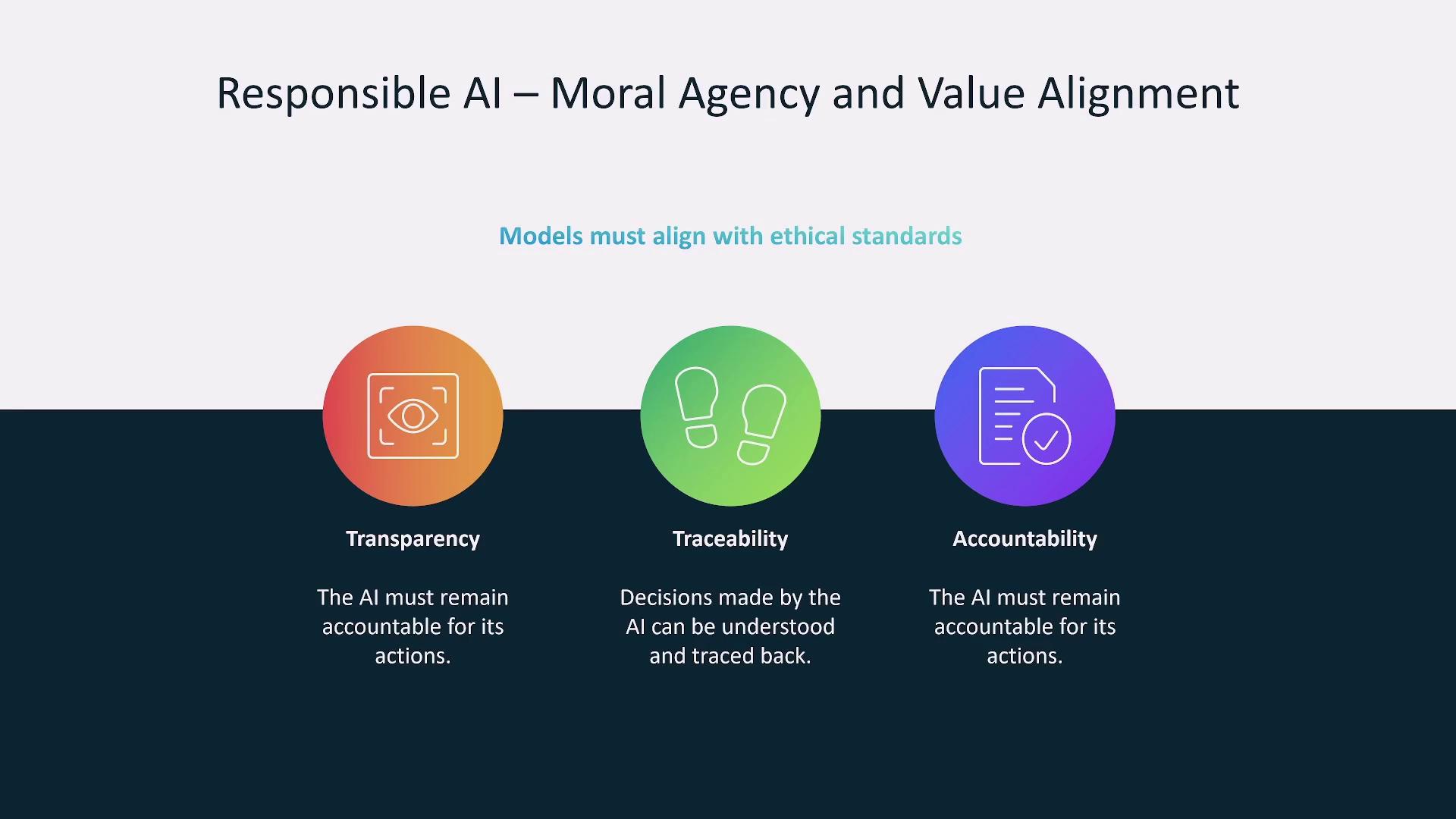
Conclusion
Selecting a model that embraces transparency and accountability is critical for aligning your AI systems with ethical standards. By carefully considering your application use case, evaluating model performance across datasets, addressing environmental impact, and incorporating ethical principles, you can optimize your model selection process for both technical excellence and responsible AI practice.
Thank you for reading. We look forward to guiding you through more insights in our next article.
For further reading, check out our Kubernetes Documentation and the Terraform Registry.
Watch Video
Watch video content